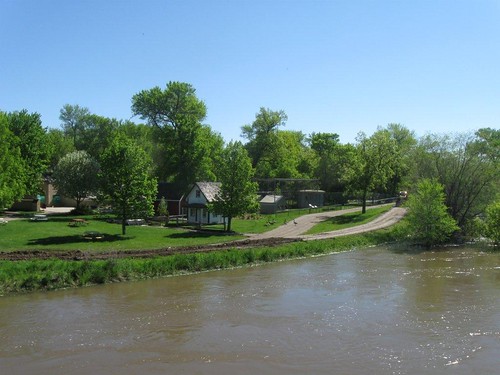In late May, two zoos in central North Dakota were hit hard by flooding. The disaster prompted the need for a swift evacuation of the animals. In Bismarck, the Missouri River threatened to submerge the Dakota Zoo and its 500+ animals under as much as seven feet of water, and in Minot the Roosevelt Park Zoo was a potential target of the rising Souris River, which runs directly through the city.
During the height of the flooding, APHIS’ Animal Care Program monitored reports coming from the zoos and kept abreast of river levels. Inspector Amy Jirsa-Smith contacted zoo officials regularly. She was on-site at both facilities, and helped corral some animals at the Dakota Zoo so they could be transported to other facilities. However, she is quick to point out that the zoo staff at both facilities, with the assistance of several cooperating state and local agencies, state veterinarians, four neighboring zoos and the National Guard, had everything under control.

“Things can always be improved, but I’m pretty pleased with how these zoos handled these situations,” said Jirsa-Smith. “The Roosevelt Park Zoo got all its animals out in a 12-hour period and all but the bears were loaded without any chemical immobilization. That’s incredible.”
The Dakota Zoo and the Roosevelt Park Zoo had evacuation/contingency plans, and this was vital to ensuring the safety of these animals. Both zoos fall under Animal Care’s regulation because they are covered under the Animal Welfare Act as animals that are exhibited to the public. In 2009, the Dakota Zoo created an evacuation plan based on flooding threats and the zoo implemented its plan successfully during this emergency.
For the last 18 months, the Animal Care Program has funded a cooperative project on emergency planning for zoos with Chicago’s Lincoln Park Zoo, on behalf of the Zoo Animal Health Network (ZAHN), Association of Zoos and Aquariums, and other stakeholders. ZAHN provided an array of reference materials involving planning and recovery to the Dakota Zoo. Animal Care is currently finalizing a regulation that will amend the Animal Welfare Act to require all facilities regulated under the Act to develop contingency plans.
“The fact that these two North Dakota zoos invested in planning is absolutely critical, and it made both evacuations so successful,” said Dr. Chester Gipson, Animal Care’s deputy administrator.
